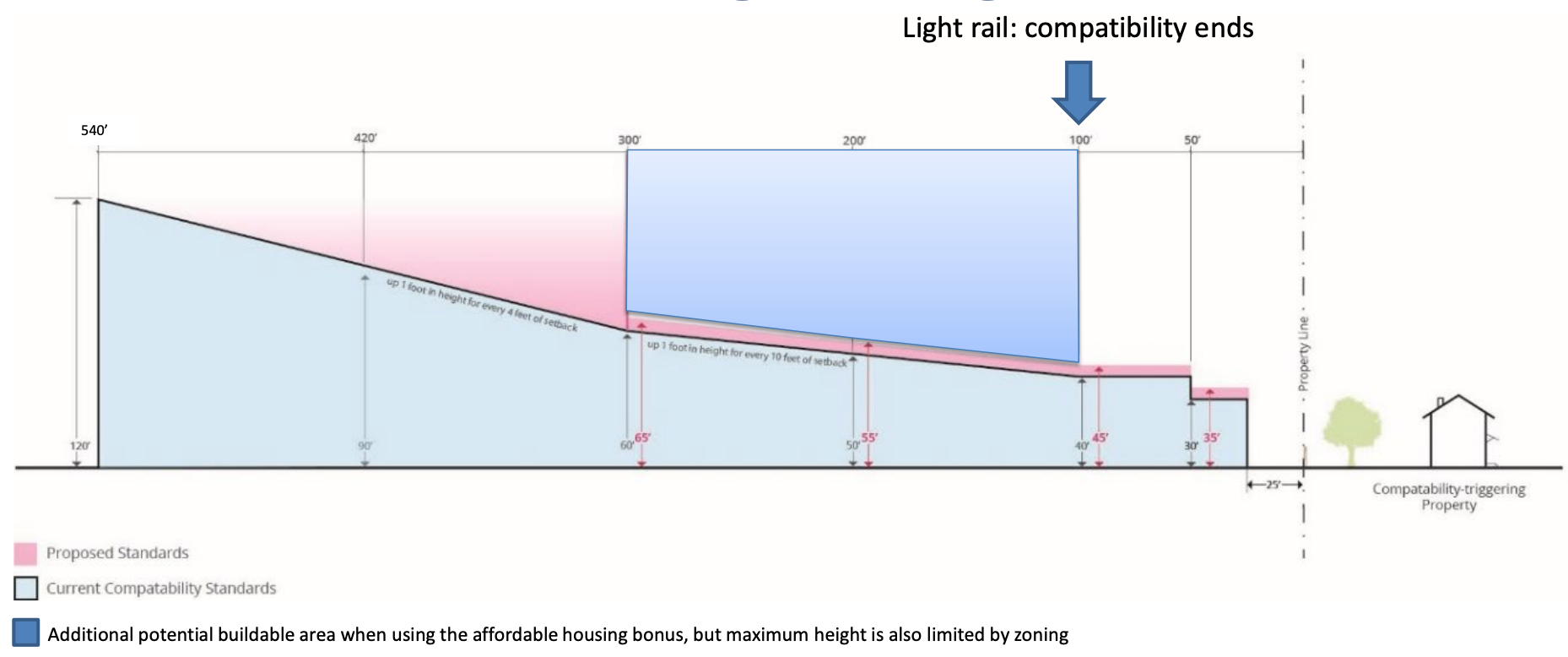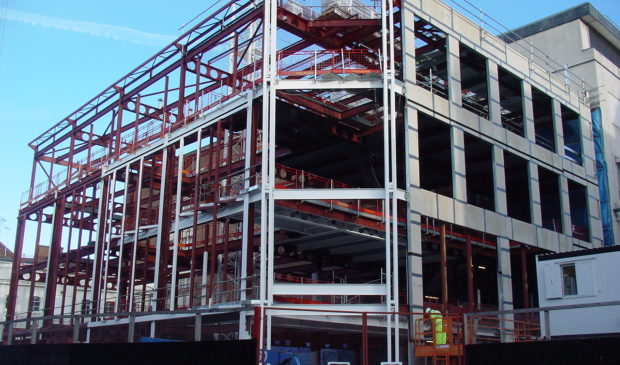City staffers push back on proposed changes to compatibility
Wednesday, November 16, 2022 by
Jonathan Lee A proposal by City Council to reduce compatibility along major streets would make the city’s Land Development Code more complicated while doing little to increase housing supply, city staffers told the Planning Commission last Tuesday.
“We’re very supportive of the direction (the proposal is) going and relaxing compatibility to encourage housing capacity … but as it’s drafted we’re currently not supporting it,” Greg Dutton with the Housing and Planning Department said.
Dutton said the proposed changes could cause confusion and uncertainty for city staffers, developers and the public. And even with the changes, compatibility would still impact most properties along corridors to some extent.
Compatibility, a rule that limits building height near single-family homes, hurts the city’s housing capacity by making projects smaller or unfeasible altogether. Austin’s compatibility rules far exceed those in peer cities.
Council initiated the changes in June to lessen compatibility’s impact on developments along some major streets, including future light rail corridors, as defined in this list.
Here are the proposed changes for all properties on listed corridors:
- Compatibility will extend 300 feet in distance (versus 540 feet currently)
- Compatibility will be triggered by zoning only (not use)
- Compatibility cannot be triggered from across a corridor
- An additional 5 feet of height will be allowed
Here are the proposed changes for projects that provide affordable housing:
- On a light rail line, buildings could reach the maximum allowed height at a distance of 100 feet from a triggering property
- On a large corridor, buildings could reach 65 feet of height at a distance of 100 feet from a triggering property and 90 feet of height at 200 feet from a triggering property
- On a medium corridor, buildings could reach 65 feet of height at a distance of 150 feet from a triggering property and 90 feet of height at 250 feet from a triggering property
Relaxed compatibility would only apply to residential or mixed-use projects that either include at least 10 percent affordable units on-site or pay a fee toward building affordable housing elsewhere. Affordable rental units would be priced for those making 60 percent of the median family income, with ownership units priced at 80 percent MFI.
The diagram below shows how the changes would play out on a light rail corridor:

Photo by city of Austin.
The code change would also reduce minimum parking requirements. On a light rail line or large corridor, developers would only have to build 25 percent of the parking that would otherwise be required; on a medium corridor, parking requirements would be 50 percent of what is currently required. Only residential or mixed-use projects would qualify for reduced parking.
Staffers recommend postponing the item to allow for a broader conversation about changing compatibility.
“I think we probably need changes to compatibility standards in general,” Erica Leak with Housing and Planning said. Staffers have also suggested that reductions to compatibility could help offset new drainage and landscaping requirements that likely add to the cost of building.
While the Planning Commission did not discuss the item in-depth last Tuesday (that’s on this Tuesday’s agenda), commissioners did preview recommendations by a working group. Among other things, the working group supports further reducing compatibility and parking requirements.
Council is set to discuss compatibility on Dec. 1. If the item is postponed into next year, a different group of Council members will take up the proposal, with several new members –including a new mayor – taking office in January.
Photo by Rept0n1x, CC BY-SA 3.0, via Wikimedia Commons.
The Austin Monitor’s work is made possible by donations from the community. Though our reporting covers donors from time to time, we are careful to keep business and editorial efforts separate while maintaining transparency. A complete list of donors is available here, and our code of ethics is explained here.
You're a community leader
And we’re honored you look to us for serious, in-depth news. You know a strong community needs local and dedicated watchdog reporting. We’re here for you and that won’t change. Now will you take the powerful next step and support our nonprofit news organization?











